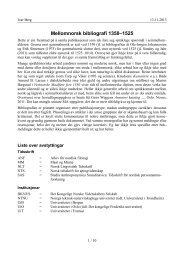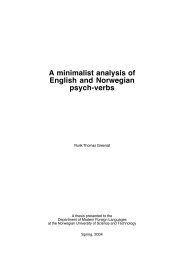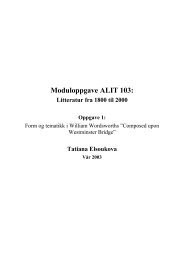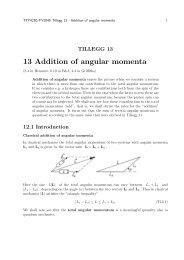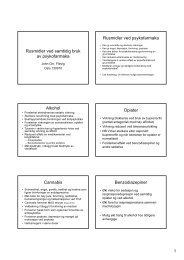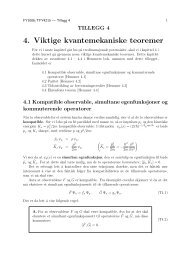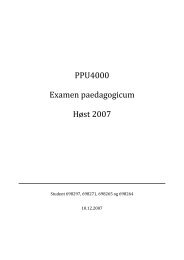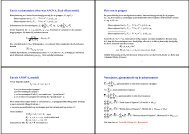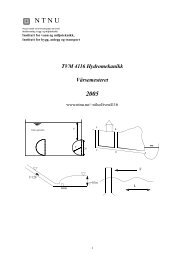Fatigue in thin films Lifetime and damage formation.pdf
Fatigue in thin films Lifetime and damage formation.pdf
Fatigue in thin films Lifetime and damage formation.pdf
You also want an ePaper? Increase the reach of your titles
YUMPU automatically turns print PDFs into web optimized ePapers that Google loves.
O. Kraft et al. / Materials Science <strong>and</strong> Eng<strong>in</strong>eer<strong>in</strong>g A319–321 (2001) 919–923 923<br />
significantly slower or suppressed <strong>in</strong> th<strong>in</strong>ner <strong>films</strong>,<br />
which would be qualitatively <strong>in</strong> agreement with the fact<br />
that the strength of metal <strong>films</strong> <strong>in</strong>creases with decreas<strong>in</strong>g<br />
film thickness [1,2,14]. However, it is currently not<br />
clear, if the <strong>formation</strong> of the extrusions is related to the<br />
occurrence of dislocation structures, such as persistent<br />
slip b<strong>and</strong>s, as <strong>in</strong> bulk materials. More systematic studies,<br />
<strong>in</strong>clud<strong>in</strong>g TEM <strong>in</strong>vestigations, are currently pursued<br />
to obta<strong>in</strong> a deeper underst<strong>and</strong><strong>in</strong>g of fatigue<br />
mechanisms <strong>in</strong> th<strong>in</strong> <strong>films</strong>.<br />
5. Summary<br />
Fig. 5. Damage morphology after fatigue test<strong>in</strong>g; (a) Focused ion<br />
beam micrograph of a 3 m thick Cu film on a polyimide substrate,<br />
large extrusions <strong>and</strong> cracks are marked by E <strong>and</strong> C, respectively. (b)<br />
SEM micrograph show<strong>in</strong>g the 0.8 Ag film, from the test described <strong>in</strong><br />
Fig. 4a, at the fixed end of a microbeam. Large extrusions (marked<br />
by E) are connected by a crack (C).<br />
function of N f . The data follow Eq. (1) with an exponent<br />
of −0.4, which is somewhat higher than typically<br />
observed values of −0.5 to −0.7 for many bulk metal<br />
materials [8]. This is partially accounted for by the use<br />
of the total stra<strong>in</strong> range <strong>in</strong>stead of the plastic stra<strong>in</strong><br />
range, because the difference between the two is more<br />
important at small stra<strong>in</strong> ranges. As a result of this<br />
consideration, the exponent of −0.4 can be regarded<br />
as an upper bound.<br />
The microbeam bend<strong>in</strong>g experiments reveal that the<br />
fatigue behavior changes significantly, when the film<br />
thickness is reduced below 1 m. Fig. 4b shows that<br />
<strong>films</strong> th<strong>in</strong>ner than 0.6 m did not fatigue with<strong>in</strong> 3.9×<br />
10 6 cycles. The <strong>formation</strong> of extrusions appears to be<br />
In an attempt to systematically study the fatigue<br />
behavior of th<strong>in</strong> metal <strong>films</strong> as a function of film<br />
thickness, gra<strong>in</strong> size, <strong>and</strong> stra<strong>in</strong><strong>in</strong>g conditions, we have<br />
developed two new methods. Central to both methods<br />
is the use of an elastic substrate, which acts as an<br />
antagonist to an external mechanical load<strong>in</strong>g. First<br />
results can be summarized as follows; fatigue <strong>damage</strong><br />
<strong>in</strong>cludes the <strong>formation</strong> of large transgranular extrusions<br />
<strong>and</strong> <strong>in</strong>tergranular cracks. The crack <strong>formation</strong> is associated<br />
with a dist<strong>in</strong>ct decrease <strong>in</strong> stiffness of the film–<br />
substrate composite. The lifetime of 3 m thick Cu<br />
<strong>films</strong> on polyimide substrates follows a Coff<strong>in</strong>–<br />
Manson-type relationship. No fatigue <strong>damage</strong> was<br />
found <strong>in</strong> Ag <strong>films</strong> with thicknesses below 0.6 m as<br />
tested by dynamic microbeam deflection.<br />
References<br />
[1] W.D. Nix, Met. Trans. A 20A (1989) 2217–2245.<br />
[2] R.-M. Keller, S.P. Baker, E. Arzt, J. Mater. Res. 13 (1998)<br />
1307–1317.<br />
[3] E. Arzt, Acta Mater. 46 (1998) 5611–5626.<br />
[4] U. Essmann, H. Mughrabi, Phil. Mag. A 40 (1979) 731–756.<br />
[5] S. Hong, R. Weil, Th<strong>in</strong> Solid Films 283 (1996) 175–181.<br />
[6] M. Judelewicz, H.U. Künzi, N. Merk, B. Ilschner, Mat. Sci. Eng.<br />
A186 (1994) 135–142.<br />
[7] D.T. Read, Int. J. <strong>Fatigue</strong> 20 (1998) 203–209.<br />
[8] S. Suresh, <strong>Fatigue</strong> of Materials, Second ed, Cambridge University<br />
Press, Cambridge, 1999, pp. 137–139.<br />
[9] Y. Oshida, P.C. Chen, J. Electr. Packag<strong>in</strong>g 113 (1991) 58–62.<br />
[10] H.D. Merchant, M.G. M<strong>in</strong>or, Y.L. Liu, J. Electron Mater. 28<br />
(1999) 998–1007.<br />
[11] M. Hommel, O. Kraft, <strong>and</strong> E. Arzt. J. Mater. Res., 14 (1999).<br />
[12] R. Schwaiger, O. Kraft, Scr. Mat. 41 (1999) 823–829.<br />
[13] S.P. Baker, W.D. Nix, J. Mater. Res. 9 (1994) 3131–3144.<br />
[14] R. Venkatraman, J.C. Bravman, J. Mater. Res. 7 (1992) 2040.




